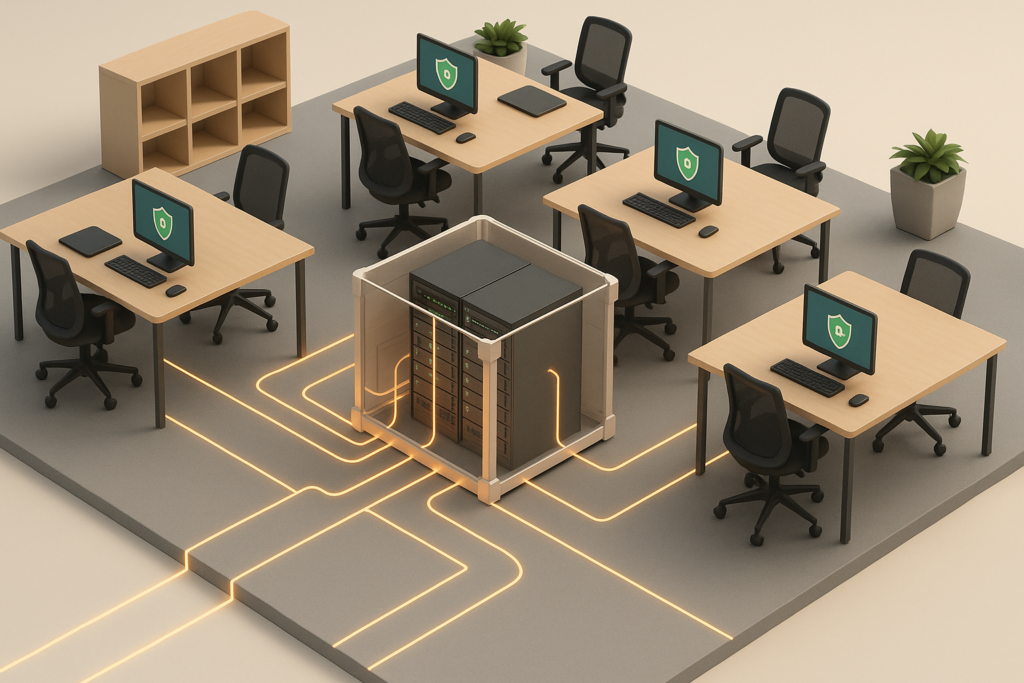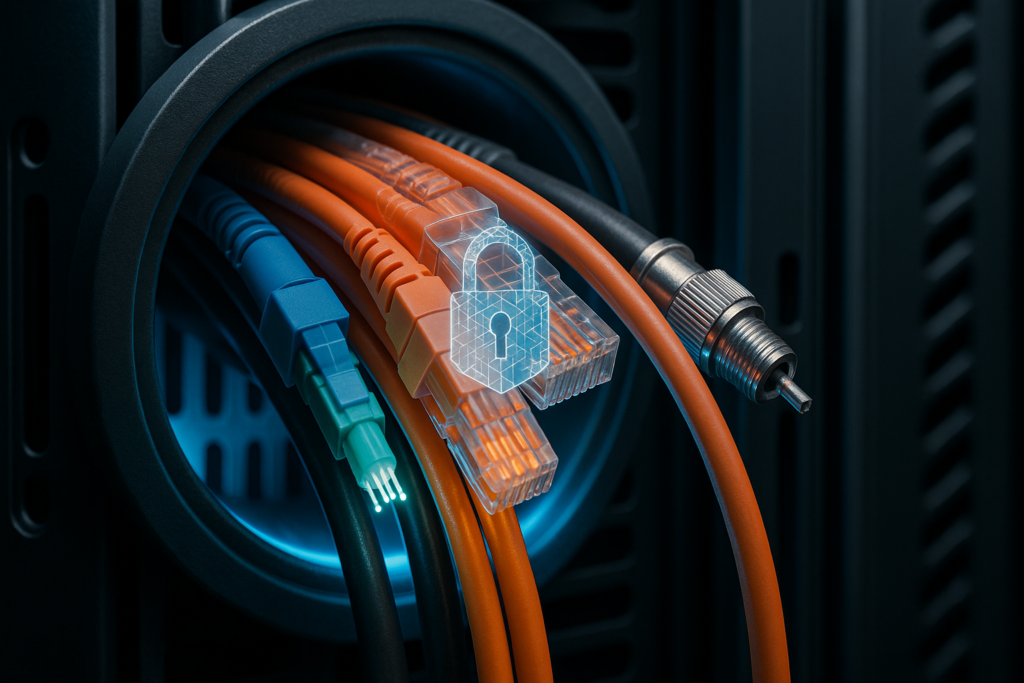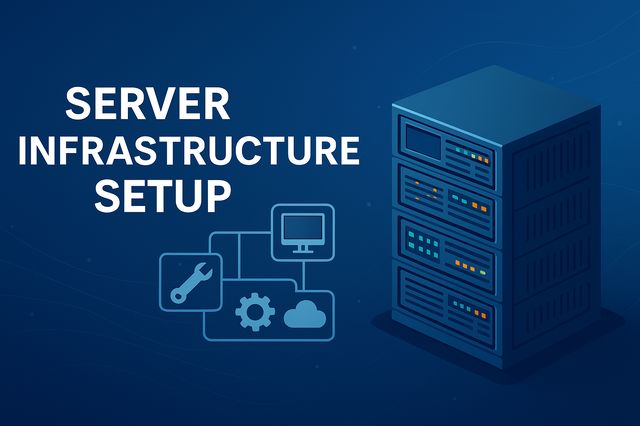Infrastructure bottlenecks occur when outdated or mismatched IT components from cabling and switches to firewalls restrict data flow and slow business operations.
In 2025, SMBs that invest in structured cabling, gigabit-ready switches, and next-generation firewalls (NGFW) eliminate performance choke points, enhance cybersecurity, and improve operational resilience.
Relocation projects are the ideal time to rebuild networks with scalable, high-quality infrastructure that supports hybrid work, cloud integration, and Zero Trust security models.
For small and mid-sized businesses (SMBs), technology is more than just a support function it’s the backbone of daily operations. Yet many discover the hard way that outdated or poorly planned infrastructure creates IT bottlenecks. These chokepoints slow down critical applications, frustrate employees, and weaken cybersecurity.
Relocation projects often expose these weaknesses. Moving to a new office forces SMBs to reevaluate their infrastructure cabling, switches, servers, and firewalls. At this stage, investing in quality infrastructure isn’t optional; it’s the difference between smooth operations and years of recurring performance issues.

What Exactly Is an IT Bottleneck?
An IT bottleneck occurs when one component of the network cannot keep up with the traffic flowing through it. This imbalance leads to:
Slow file transfers and lagging applications.
Choppy video calls and VoIP disruptions.
Frustration accessing cloud services.
Firewalls skipping inspections under heavy load, creating security risks.
SMB upgrades to a high-speed fiber connection but keeps outdated switches. Instead of 1 Gbps, the business is limited to 100 Mbps wasting investment and frustrating users.
Infrastructure Layers Where Bottlenecks Appear
Cabling Systems | The Foundation Everyone Forgets

Old or poorly terminated cabling is one of the most underestimated risks.
Cat5 cables cap performance at 100 Mbps.
Improper labeling and messy racks make troubleshooting painful.
Structured cabling (Cat6/Cat7) provides higher bandwidth and future-proofing.
Relocation is the perfect time to rewire the office with modern, documented cabling.
Network Switches | The Silent Bottleneck
According to Network Supply, outdated switches are one of the most common culprits of internet slowdowns in SMBs.
10/100 Mbps switches cannot handle gigabit or multi-gigabit connections.
Even with a high-speed ISP, old switches throttle performance.
Applications like cloud sync, video conferencing, and security monitoring all degrade.
Upgrade to Gigabit or 10G managed switches with VLAN segmentation, QoS, and redundant uplinks. For SMBs relocating offices, this is the ideal moment to leave behind outdated hardware and build a network that matches business growth.
Servers and Storage Legacy Isn’t Always an Asset
Old servers can’t handle virtualization or data-intensive workloads.
Storage bottlenecks delay backups and recovery processes.
Relocation exposes aging systems that may not justify the cost of transport and reinstallation.
SMBs should consider whether to replace legacy systems with cloud or hybrid solutions rather than relocating outdated equipment.
Firewalls and Security Appliances Protect Without Slowing Down
Firewalls are both a shield and a potential bottleneck.
Overloaded firewalls skip deep inspection under stress.
SMBs with growing bandwidth often outgrow older firewall models.
Next-Gen Firewalls (NGFW) with hardware acceleration provide both speed and security.
Example During a relocation, an SMB discovered its firewall could not handle encrypted traffic at new gigabit speeds. Upgrading to an NGFW not only resolved the bottleneck but also improved intrusion detection.
Why Bottlenecks Are Also Security Risks
It’s tempting to think of bottlenecks as “just a performance problem,” but they directly affect security posture:
Delayed Detection | Overloaded systems can’t scan or log threats properly.
Visibility Gaps | Fragmented traffic paths create blind spots.
Patch Delays | Older hardware struggles with updates, leaving vulnerabilities open.
A smooth, scalable infrastructure ensures that security tools operate at full capacity, protecting the business.
Best Practices to Prevent Bottlenecks
Upgrade Cabling | Use Cat6/Cat7 structured cabling with clear labeling.
Modernize Switches | Ensure gigabit at minimum; consider 10G uplinks for future growth.
Right-Size Firewalls | Choose models designed for today’s and tomorrow’s bandwidth needs.
Redundancy and Load Balancing | Use multiple ISPs, SD-WAN, and dual power feeds.
Cloud Integration | Shift certain workloads off-site to reduce local congestion.
Regular Audits | Conduct assessments during relocations or expansions to catch bottlenecks early.
Why Relocation Is the Best Time to Act
Relocation is not just a logistical move it’s a reset button. Instead of transferring bottlenecks from the old office to the new one, SMBs can:
Rebuild racks with structured cabling.
Upgrade switches to support gigabit and beyond.
Replace outdated firewalls with NGFW.
Design infrastructure with scalability and cloud integration in mind.
For SMBs, bottlenecks are more than an annoyance they’re a direct threat to productivity, security, and business continuity. From outdated cabling and switches to underpowered firewalls, weak links create cascading problems across the IT stack.Relocation is the perfect moment to eliminate these issues and invest in high-quality infrastructure that can support future growth. By doing so, SMBs turn an office move into a strategic opportunity, ensuring performance and security for years to come.

Bottlenecks usually stem from outdated cabling (e.g., Cat5), legacy switches, or underpowered firewalls that can’t handle modern traffic.
These weak links restrict performance, delay data transfers, and degrade security monitoring.
When firewalls or switches are overloaded, they skip deep packet inspections and fail to log threats properly.
This creates visibility gaps, delays detection, and increases the likelihood of undetected breaches.
Next-Generation Firewalls (NGFW) include hardware acceleration and encrypted traffic inspection, allowing them to protect without slowing performance.
They combine speed, visibility, and advanced threat prevention essential for modern SMBs.
Next-Generation Firewalls (NGFW) include hardware acceleration and encrypted traffic inspection, allowing them to protect without slowing performance.
They combine speed, visibility, and advanced threat prevention essential for modern SMBs.
Because relocation exposes hidden inefficiencies.
It’s the perfect time to:
Replace outdated cabling
Upgrade switches to gigabit or 10G
Deploy NGFWs and structured racks
Design scalable, cloud-ready network topology
This prevents legacy issues from following the business into its new environment.
Upgrade to Cat6/Cat7 cabling
Use managed gigabit/10G switches
Implement redundant ISPs and SD-WAN
Conduct regular infrastructure audits
Align upgrades with business growth and cybersecurity policies
References
Solving Internet Bottlenecks: Outdated Network Switches – network-supply
How to Identify, Resolve, and Prevent Performance Issues – flashedgecdn
Cisco explains why the network is AI’s looming bottleneck – venturebeat


